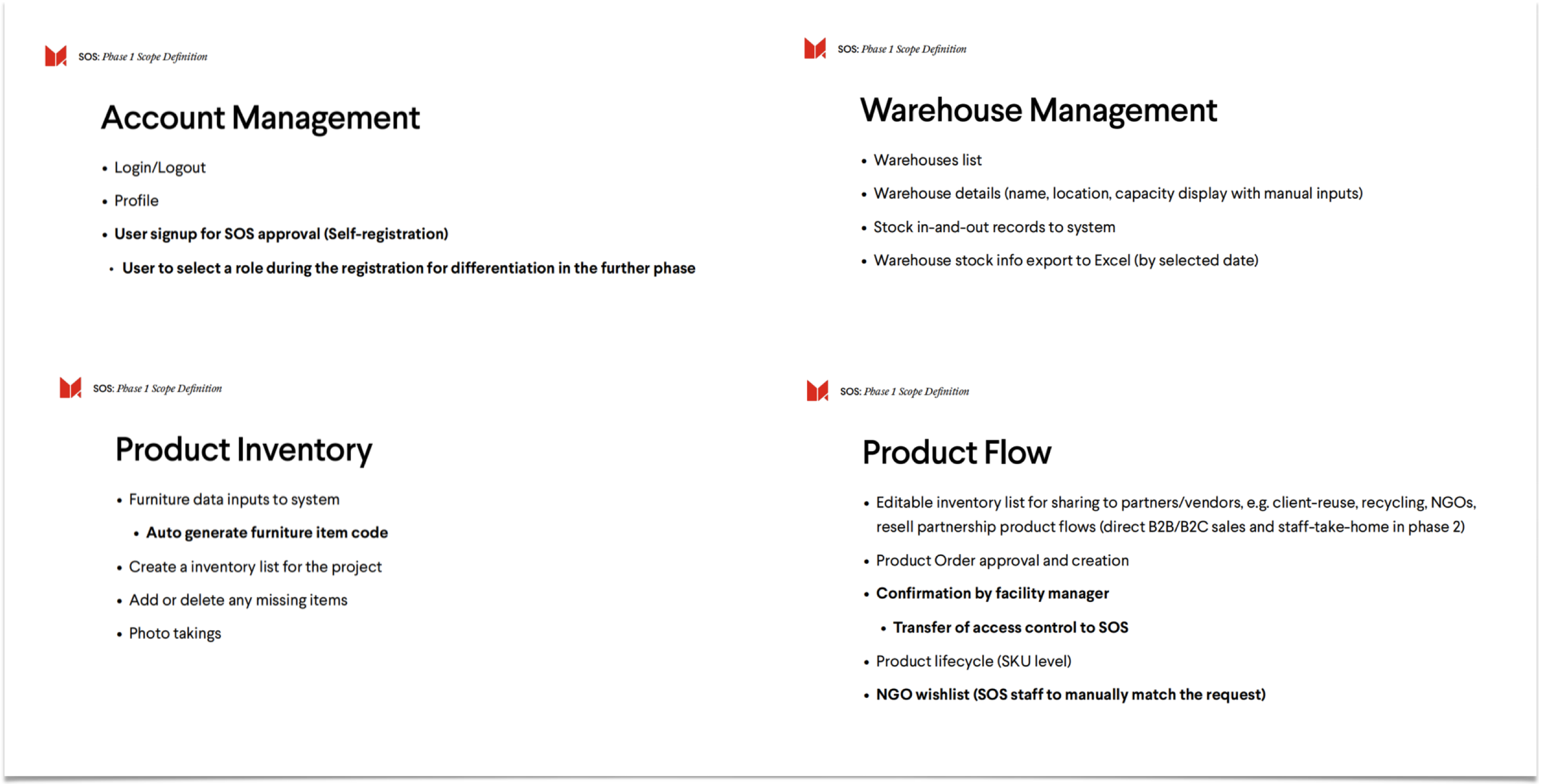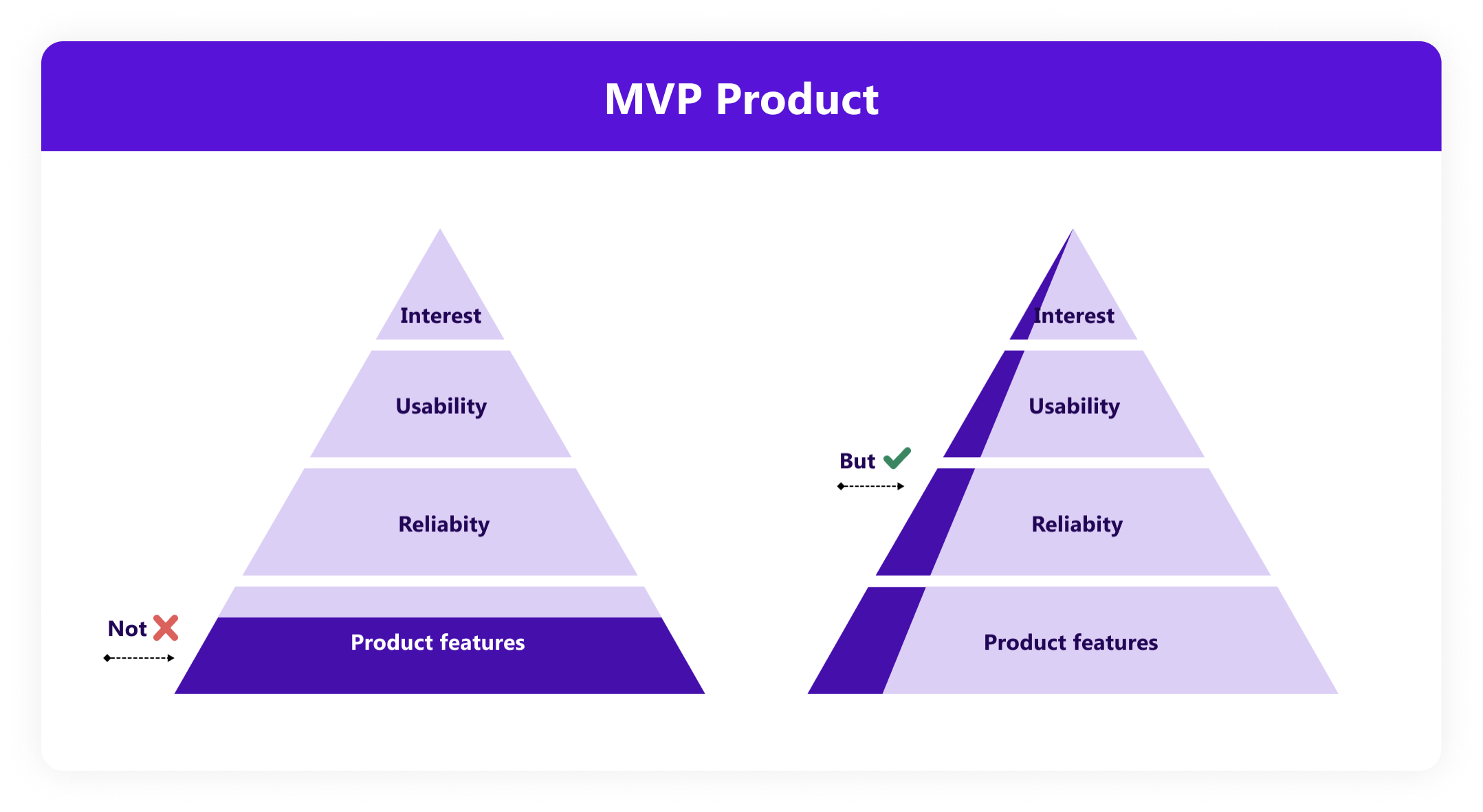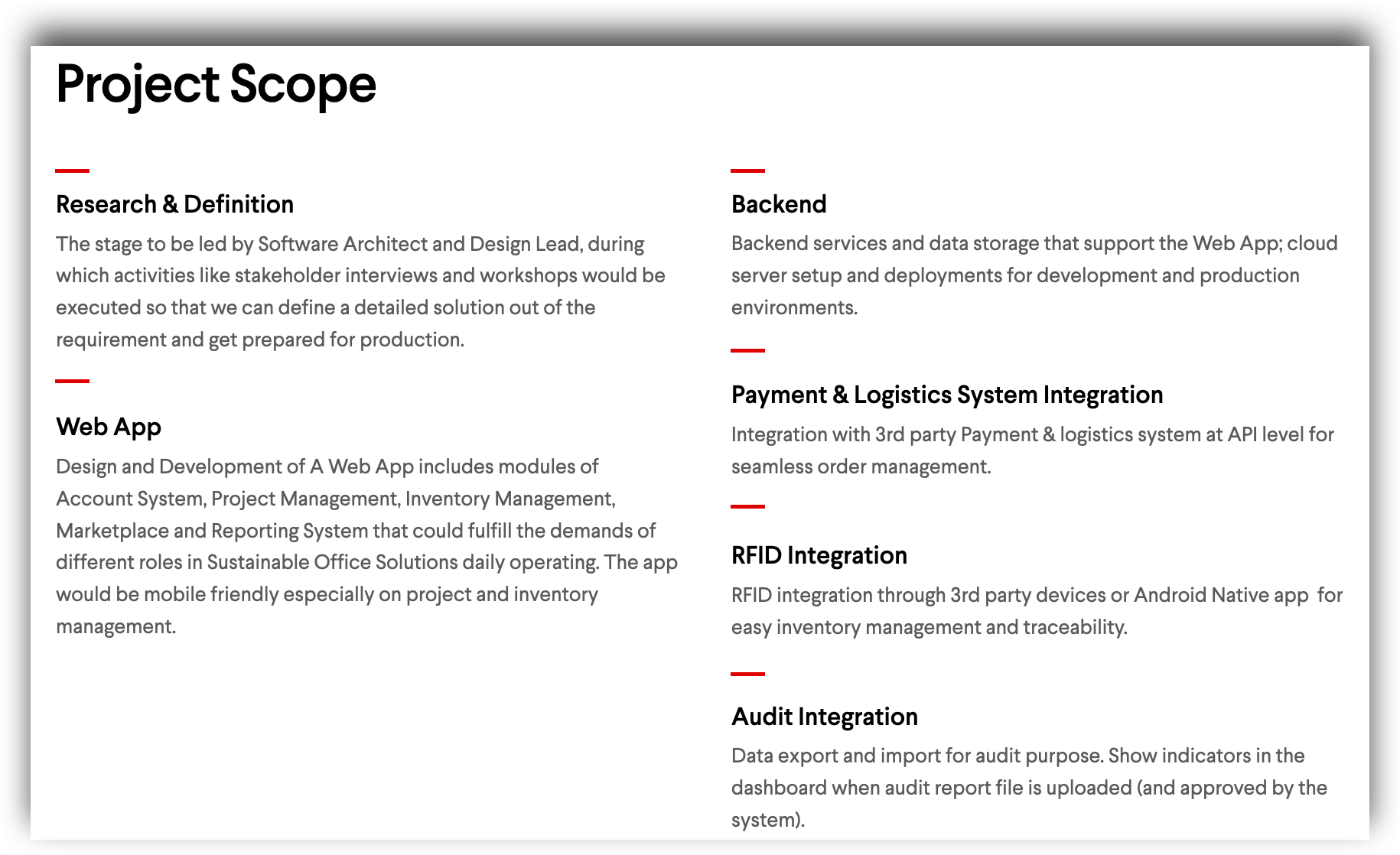¶ MVP Scope Definition
¶ What it is
MVP is short for a Minimum Viable Product.
MVP scope definition is sorting out the minimum set of most vital modules that the MVP must have to go to market.
¶ Why it is useful
An MVP is essential to test the product quickly at the lowest investment before a giant product is produced with too many details or functional modules. To avoid waste of resources before the MVP gets tested and proven to be in the right product direction from the perspective of user value and market feedback.
¶ When to use
When the organisation is not fully confident in what they would like to put into the market, MVP is usually an excellent way to fast test the ideas. At this time, defining the MVP scope is a valuable topic to guide the way.

¶ How is it done
1. Identify Your Main Business Objective
- Besides the most basic features, a product must have, the scope to consider should be based on the Number 1 goal of the product. Bearing the goal in mind will help make decisions and prioritise.
2. Add Story Mapping
- Identify your target users and define how they might use your product. In other words, define personas, user flows, and use cases.
3. Define your Features
- After story mapping, you now have a list of features coming into being. The next step is to analyse the values and your expectations of these features.
- With the ratings, you will have a clear view of which to include or exclude in the MVP.
¶ Do's & Don't
Do's
- Define a complete system even though it’s just an MVP. To build an MVP is to provide a full experience, not an incremental model. It is not only to develop some modules. It needs to run through an entire minimum business closed-loop process.
- Be happy because you only invested in it as an MVP. Then investigate your next steps with the test results for new opportunities to improve.
Don't
- Don’t engage many users in MVP validation; test in a small range.
- Only core features are the most valuable.
¶ Tools needed
¶ Example

¶
¶ Useful Tips
¶ MVP is not….
The word MVP is easily misused. There are some very common fallacies, and we can all fall victim to them.
"MVP" means the quantity is more significant than quality - NO!
MVP is not to build everything you want with quality lower than ideal or required. People often add many ideas to the original version and then find that the critical work in the process has yet to be achieved.
Use "MVP" as a way to reduce costs - NO!
MVP is not a negotiation tool or any label of budget. MVP is not to reduce costs but to reduce risks. Saying that a function is what MVP needs is not a cheaper way for you to develop what you want.
"MVP" is a wish list - NO!
MVP is not a list of functions without priority. Your competitors will have many functions, and you will naturally feel it necessary to keep up with them. However, the fact is that most of your competitors will also have a lot of “debts," including "should have" and "can have.” This is a typical MVP bad practice. Only "must have" is the rule.

¶ So, what is MVP….
MVP aims to verify basic business assumptions and select the minimum entry point for a product to its users.
It only targets angel users in the early stages, who have a higher tolerance for the product, can see the future of the product, and are willing to interact and improve the product together.
MVP only serves the smallest range of users with the core features.
The system must be concise, and only the minimum development efforts are needed to implement it.
MVP is verification-based learning. The hypothesis-driven development model is one of the core concepts of lean entrepreneurship. To understand what problem to solve, we should know that the current solution is only a hypothesis, and even the problem to solve is only a hypothesis. Starting from understanding the theory and rapid verification, each step, function, and release have a clear goal: learning.
This is what Eric Ries calls the “development-measurement-cognition” cycle. When you observe that users have started to use the product as intended and recommend it to others, you know that it has been minimal and feasible. At this time, you should put the effect on the market. If you launch it before, the result will inevitably bring many disappointed customers.
